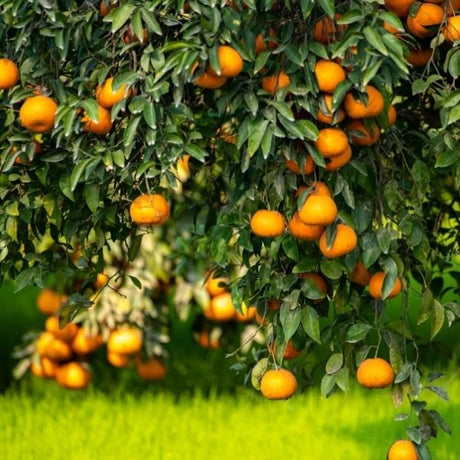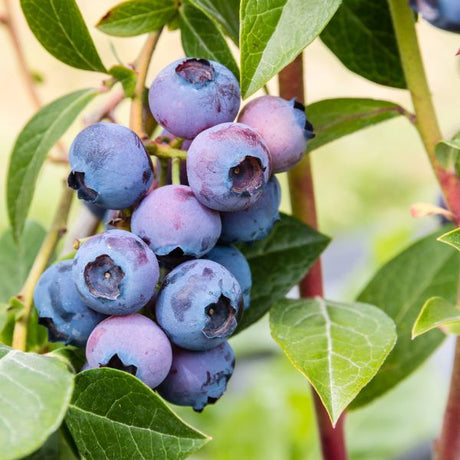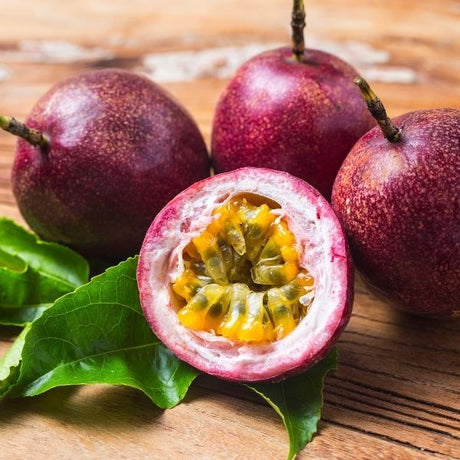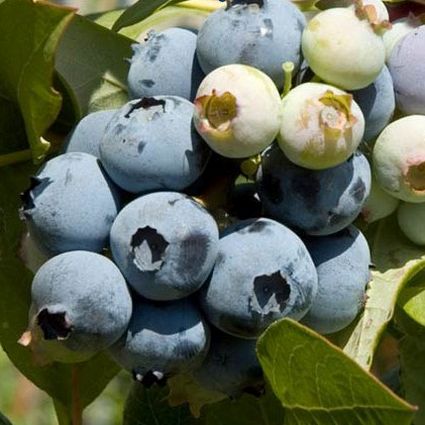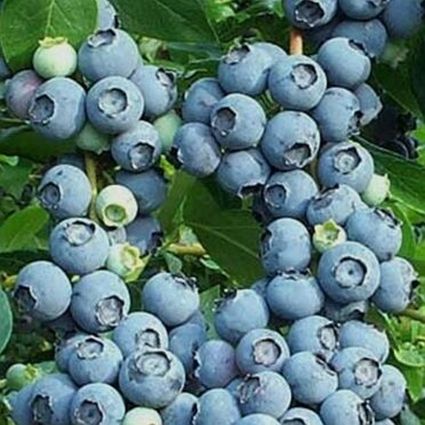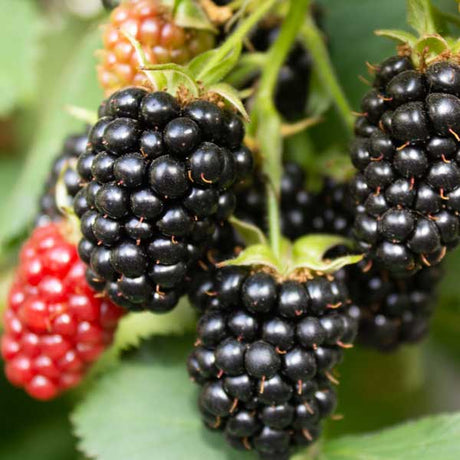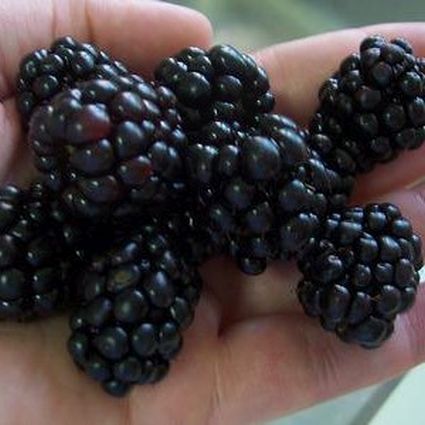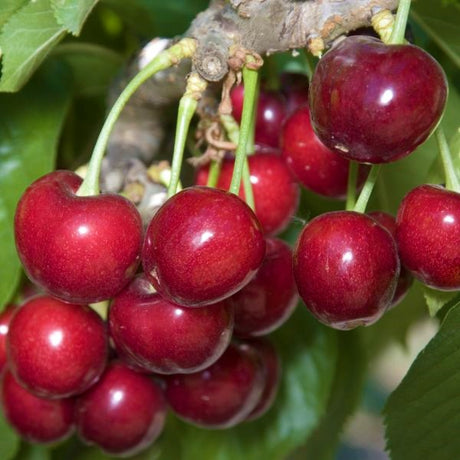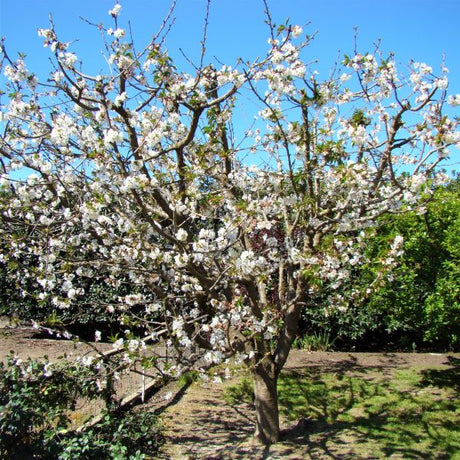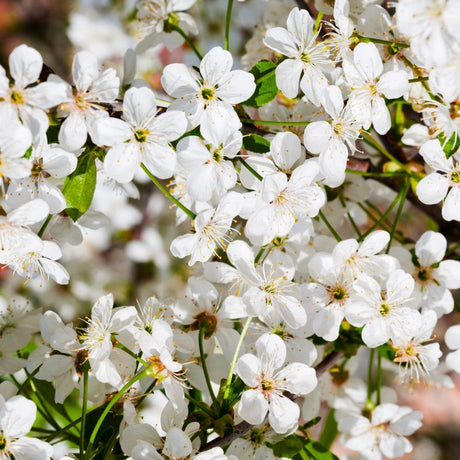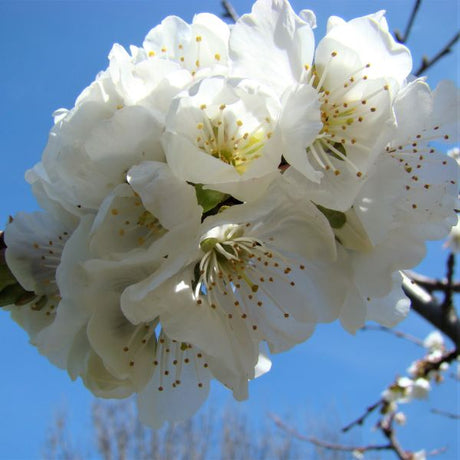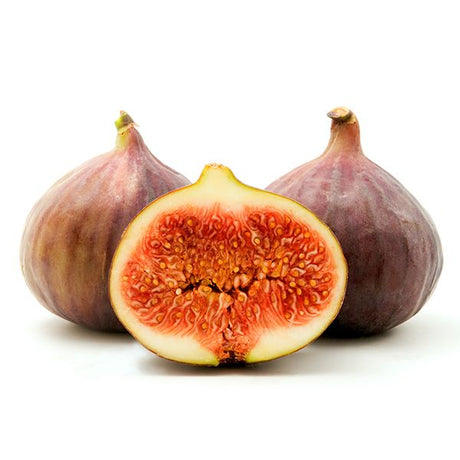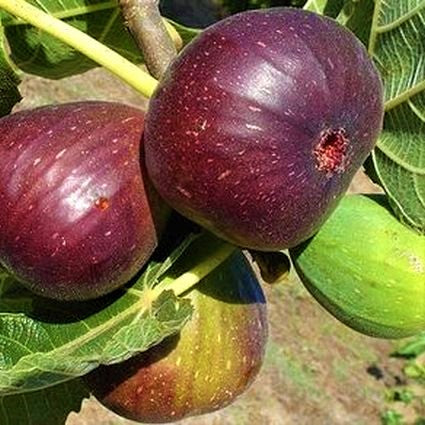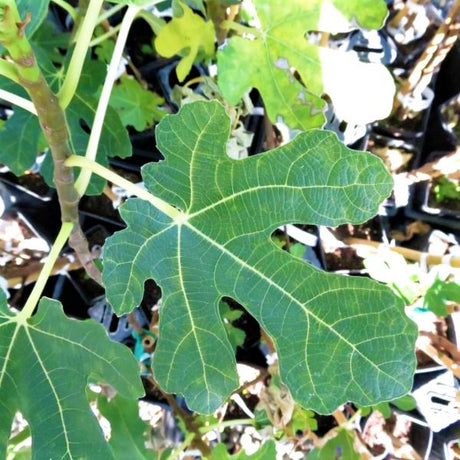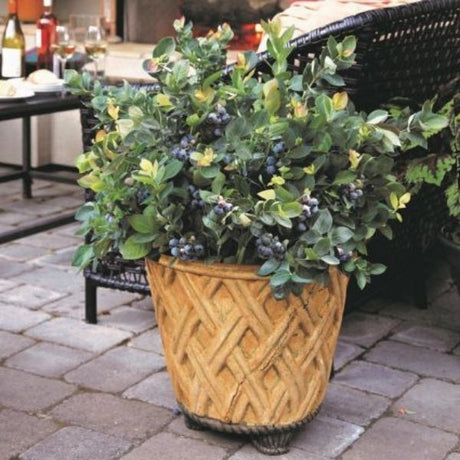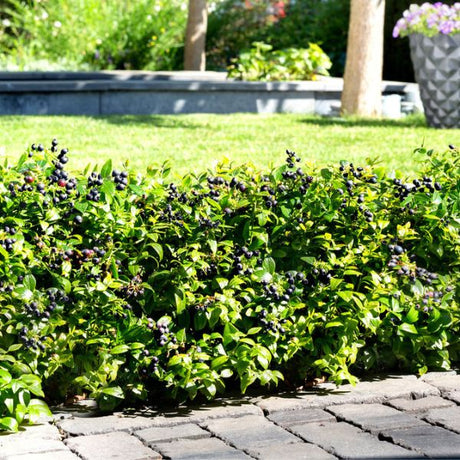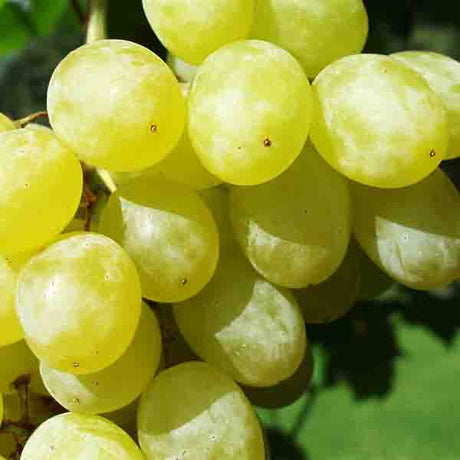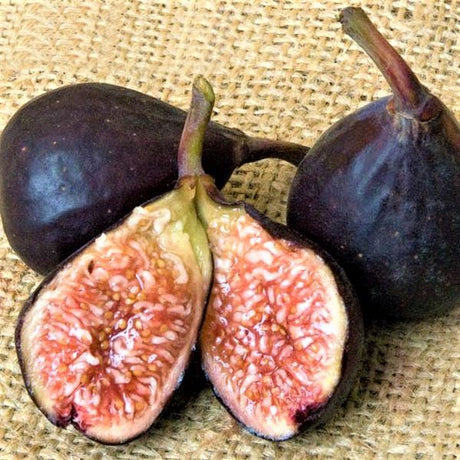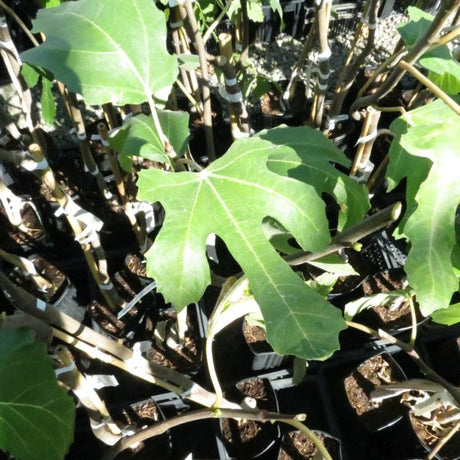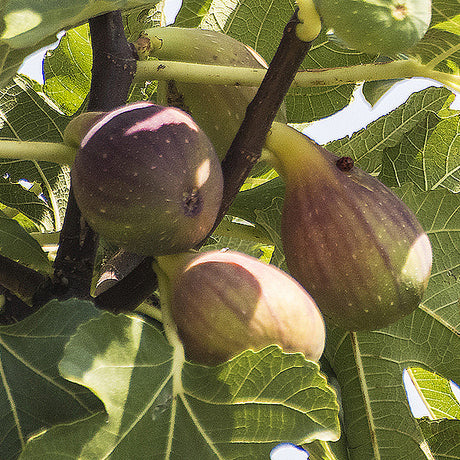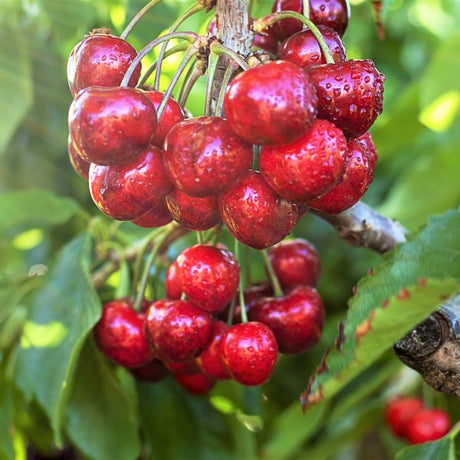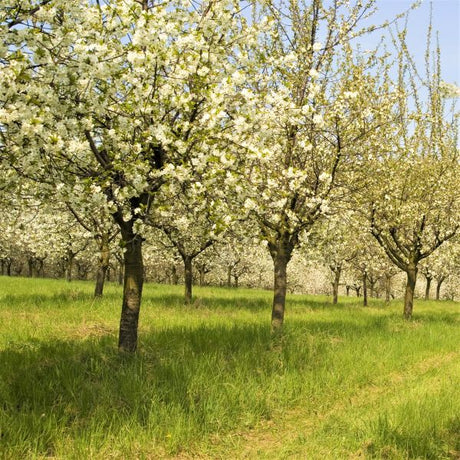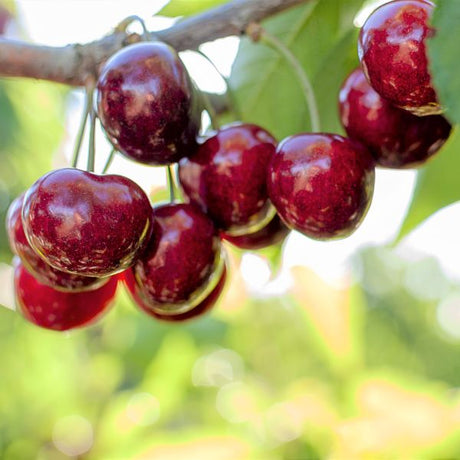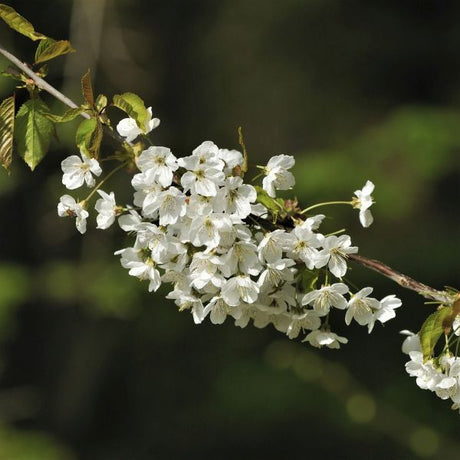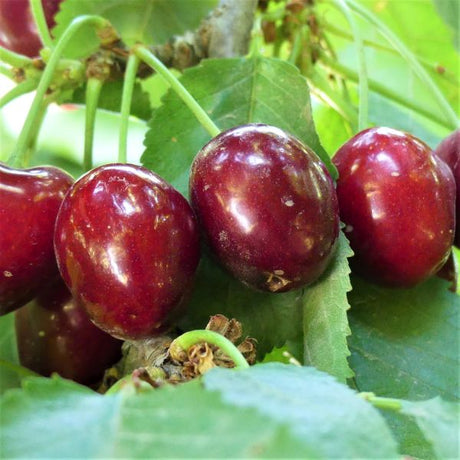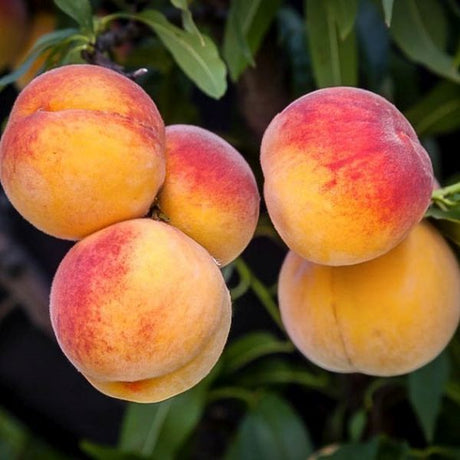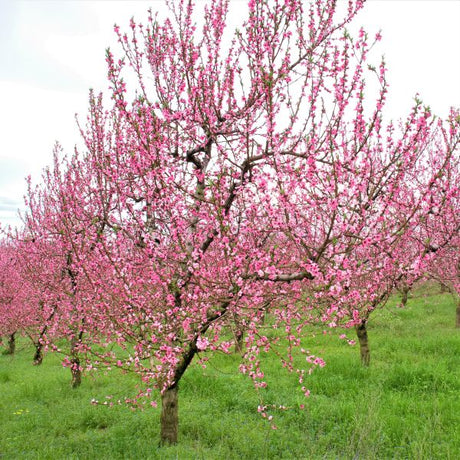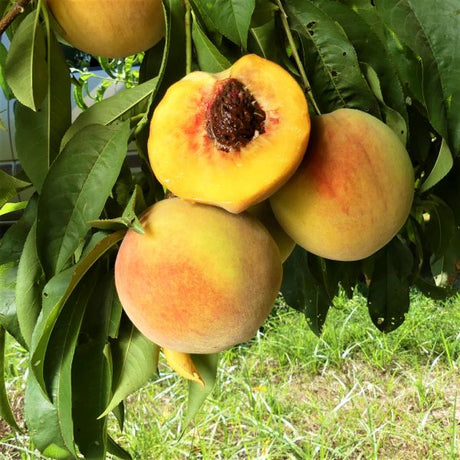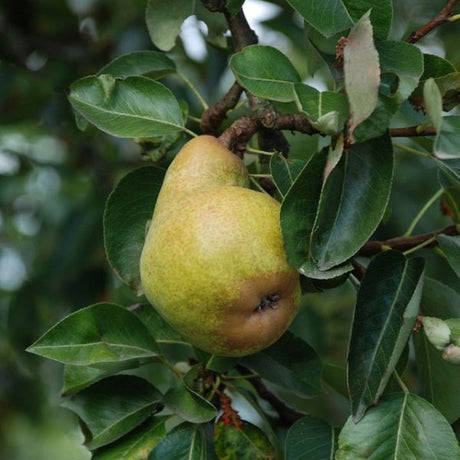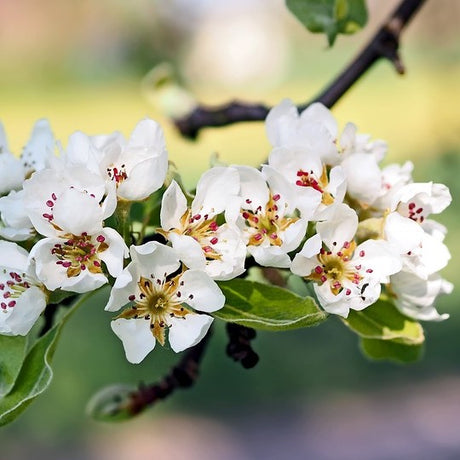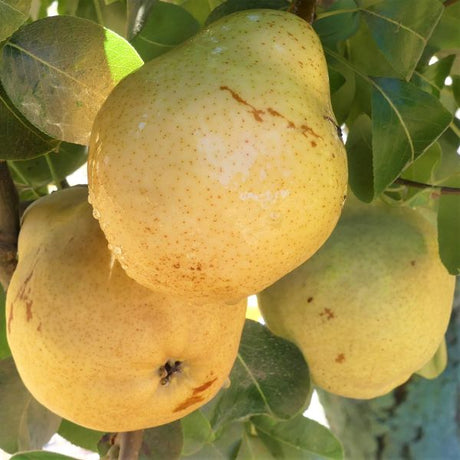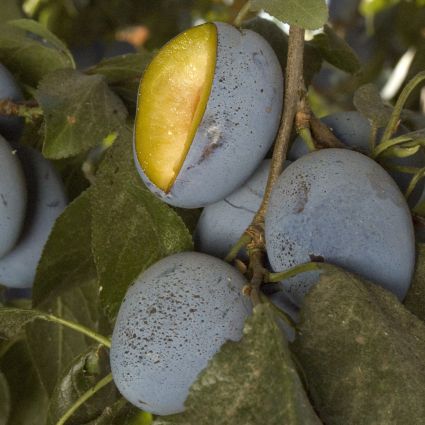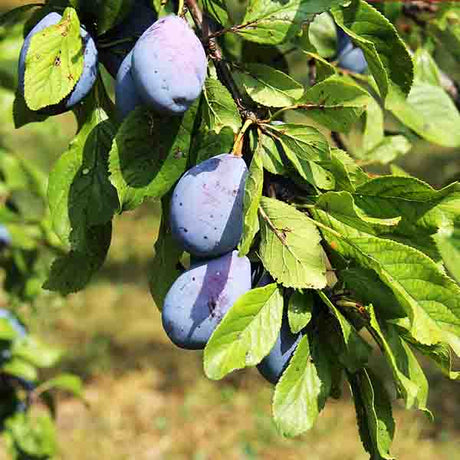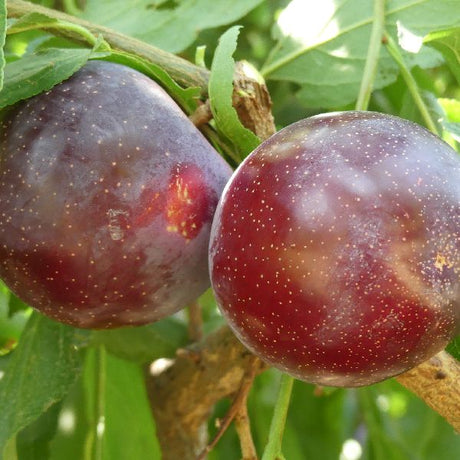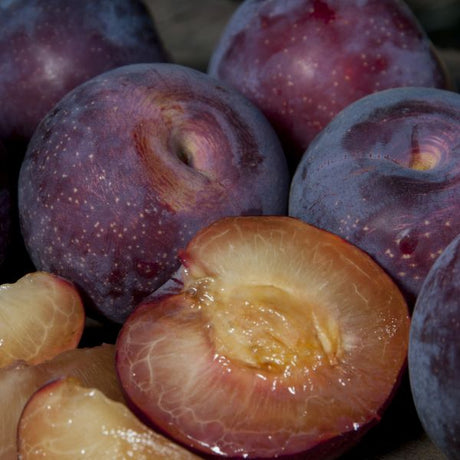- Up to 10% off
Vaccinium corymbosum 'Bluecrop'
Sale price From $4067 Regular price $4509Unit price /Unavailable - 13% off
Vaccinium corymbosum 'ZF06-079'
Sale price $4533 Regular price $5196Unit price /Unavailable - 8% off
Triple Crown Thornless Blackberry Bush
Rubus x 'Triple Crown'
Sale price $3900 Regular price $4225Unit price /Unavailable Vaccinium corymbosum 'ZF06-043'
Regular price $4527Unit price /UnavailableMalus domestica 'Yellow Delicious'
Regular price $6253Unit price /UnavailableFicus carica 'Violette de Bordeaux'
Regular price $10287Unit price /Unavailable- Sold out
- Sold out
- Sold out
- Sold out
Prunus salicina 'Santa Rosa'
Regular price From $14981Unit price /Unavailable
Fruit Plants and Fruit Trees for Sale at Nature Hills Nursery

Enjoying the fruits from your mature edible landscape feels like owning a stack of gold bars. In today's uncertain times, more people are looking to plant nut trees and fruit trees and plants now than ever before. You’ll find a delicious selection of fruit plants and fruit trees for sale at Nature Hills Nursery, but you want to act fast to secure your favorites.
We can hardly keep up with that demand. You'll love the satisfaction of being prepared with a fruitful landscape.
For incredible flavor and health benefits, grow, pick and eat ripe apples from your own tree. Boost your family's food security with supplemental homegrown fruit.
Tips to Enjoy Homegrown Fruit in Your Landscape >>
There are big advantages to growing your own fruit trees and fruit plants at home:
- You'll know exactly what sprays were (or weren't.) applied on your fruit
- No store-bought taste can compare with tree-ripe fruit from your own fruit tree
- Get your whole family involved in harvest and prepping for long-term storage
- Pull out a canning jar of peaches or a freezer bag filled with blueberries for a taste of summer in winter
Order Fruit Trees and Fruit Plants Early for the Best Selection
Don't hesitate when you see our fruit trees and plants in stock. Place your order right away, because we will sell out quickly. You can place your order at any time of the year, and we’ll reserve your selection to ship when the time is right for planting in your area.
You want to act extra-fast on the most popular fruit plants and trees. Jujube, Pawpaws and Avocados are some of the first to sell out.
Jump on our annual inventory as fast as you can.
Perennial fruit and vegetable plants like Strawberries and Asparagus are also top sellers for us.
Tuck these long-lived plants into your landscape and you'll save a bundle at the grocery store.
Go ahead and shop in November — or whenever. — to lock in your order.
Here's why you want to order your fruit trees and plants early >>
Edible Landscaping is a Red-Hot Garden Trend

Create a dedicated orchard or potager. Or weave fruit trees and plants into your edible landscaping for a beautiful presentation you'll be proud of.
Enjoy the masses of spring blooms and the excitement of your developing crop. You'll be excited to see how pretty fruit trees and plants are in the landscape.
Add a pair of showy dwarf fruit trees Mini Pix Zee Peach trees on either side of your front door. Brooks Plum trees feature gorgeous, red-tinged new foliage in spring.
People are replacing their traditional foundation plantings with fruit bushes that look great all growing season. In addition to flavorful berries, Reka Blueberry bushes provide white, bell-shaped blooms in early spring and incredible red fall color.
Fruit Trees with Healthy, Antioxidant-Rich Stone Fruit
Trees that produce fruit with a stone-like pit are particularly beneficial for the healthy, antioxidant-rich stone fruit they provide. These fruit trees include Peach, Nectarine, Plum, Apricot and Cherries.
But did you know that modern hybridizers like world-famous Zaiger Genetics are bringing great-tasting new natural crosses to market? Think of them as fruit Labradoodles, if you'd like.
Aprium is a natural cross of Apricot and Plum with deliciously sweet fruit. Aprium fruit is most similar to its Apricot parent.
Pluot is another type of cross, but this sugary-sweet, delicious fruit more closely resembles its Plum parent. Who needs cake, cookies or pie when you have tree-ripe Pluots on hand?
Most stone fruits are self-pollinating, but you'll always get a greater yield with another fruit tree nearby. You can easily grow stone fruit trees together in a high-density planting with summer pruning to keep each tree small.
Our garden blog and YouTube video channel have great information about creating high density (three-in-one or even four-in-one) planting. We even have interspecific multi-grafted fruit trees for sale on our website.
Sweet Cherry trees have a high amount of natural sugar rated on the Brix scale. They are also as pretty as a picture with clouds of spring blooms that develop into showy fruit harvest.
Tart or Sour Cherry trees and bushes grow further north than Sweet Cherries. Try a Montmorency Cherry tree as a beautiful specimen, or add a hedgerow of Romeo and Juliet dwarf Cherry bushes.

Grow Some Fruit Trees in Pots or Enjoy Year-Round in the Ground
Some fruit plants, like citrus trees, can be effectively grown in containers and live an indoor-outdoor existence. This is a big boon for northern gardeners who want to grow their own Lemons, Limes and Oranges in pots.
Top 20 Citrus Trees for Containers >>
Depending on the cultivar, lucky gardeners in zones 8 to 11 can grow citrus trees in the ground. These evergreen trees add a magnificently lush, shaggy and tropical look — and their thorns grow into a hard-working barrier planting. Don't miss the fragrant spring blooms or their prolific fruiting of the kumquat fruit tree. Kumquats are known to produce in the thousands over a single season.
Mix and match your favorite for juicing, cooking, baking and zesting. Preserve sliced citrus in oil to add astounding flavor in chicken dishes.
Tuck kid-friendly Mandarin Oranges into their lunch boxes for a healthy side. Add one to your lunchbox, too, for a waistline-friendly snack.
Grow Apple and Pear at Home with High-Quality Fruit Trees

Nature Hills Nursery supplies backyard orchards with commercial orchard-grade, vigorous Apple trees and Pear trees. We offer a delicious variety of cold-hardy and heat-tolerant varieties.
Popular Fruit Selection Guides for Growing Zones
Best Low Chill Fruit for Zones 9 and 10 >>
Best Cold-Hardy Fruit for Zones 3 and 4 >>
Grow your own healthy, fresh apples and pears for fresh eating straight from your tree. Plant one or more of these fruit trees and you'll have plenty of fruits for juicing, cooking, baking and keeping.
We offer a wide mix from the beloved cultivars like Honeycrisp apple to the more unusual heirloom varieties. Try Arkansas Black Apple for a flavorful, boldly-colored option.
European Pears like D'Anjou and Bosc add an incredible flavor to your dessert plate. Smooth, luscious texture makes these a popular favorite with families across the country.
Delicious Asian Pears like Hosui and Shinseiki bring plenty of value to home orchards. These large-sized fruit are incredibly juicy — and last a long time in storage.
Add Fruit Plants and Vines to Your Landscape Design
You'll be thrilled at the look and vigor of an excellent Blackberry hedge. Grow them front and center, with sturdy trellising that is both trim and tidy.
A spectrum of hues from red, yellow, purple to black berries of Raspberry bushes bring a delightful look. Blueberries do best in acidic soil, and can be kept in large outdoor containers.
Grape vines set up and pruned correctly will thrive for 50 years and more. Kiwi Magic Hardy Kiwi Combination vines offer a big visual impact with white blooms and loads of cocktail-sized smooth fruit.
Keep lavish Fig trees on a patio or balcony to get a close-at-hand fruit tree fix. Incredibly large leaves bring an unforgettable setting to small space gardens and large properties alike.
Attractive Fruit Trees and Plants are Both Edible and Ornamental
Olive trees are also absolutely gorgeous. There is perhaps nothing more romantic than a mature Olive tree with their gnarled, age-old form.
Add a row of ornate Pomegranate trees for brilliant red flowers and fantasy fruit. You'll love saving money at the store with a regular supply of superfruit.
Likewise, the orange fruiting display of Persimmon trees adds a lively look to your landscape. The luscious flavor of this melt-in-your-mouth fruit is matched only by their exquisite red and yellow fall color.
Shop the Best Online Nursery Fruit Trees Right Here at Nature Hills

We sell fruit plants all across the continental United States, and we strictly abide by all state and federal regulations. Type in your zip code on the product page of your preferred selection of fruit plant or tree to see if we can ship it to you.
Nature Hills Nursery is proud to be the first online plant nursery to leverage Plant Sentry™. This cutting-edge software protects your local ecosystem from regulated plant materials.
Feel great about your choice to protect our beautiful country. You'll also receive commercial orchard-grade fruit trees and plants from our expert growers.
How to Grow Your Own Healthy Edibles with our Fruit with Trees
It's heavenly to reach out to pluck a fresh pear, peach, persimmon, fig, avocado or apricot from your very own tree. Add fruit trees for interest all season, from the springtime flowers to the pretty fruit set and fall color.
For in-ground growing, choose hardy varieties that work in your growing zone. Type in your zip code above the Plant Highlights to see which fruit plants are right for you.
Fruit plants generally need full sunlight, but you'll want to study the Plant Highlights on every product page to specifics. Give them at least six hours of direct sunlight a day for full sun.
Well-drained soil is important, too. Bring in additional dirt to create a raised bed or planting mound if needed.
Plants need good air circulation. Don't plant them where air is trapped, and prune them to open the center of the canopy.
Use Nature Hills Root Booster during planting. This time-tested, symbiotic formula supports your fruit trees and plants their entire lives.
Water your fruit plants and trees consistently during fruit production. Mulch over their root system to cut down on surface evaporation.
#ProPlantTips Garden Blog Posts on Fruit Tree Care
How to Plant Your Fruit Trees >>

